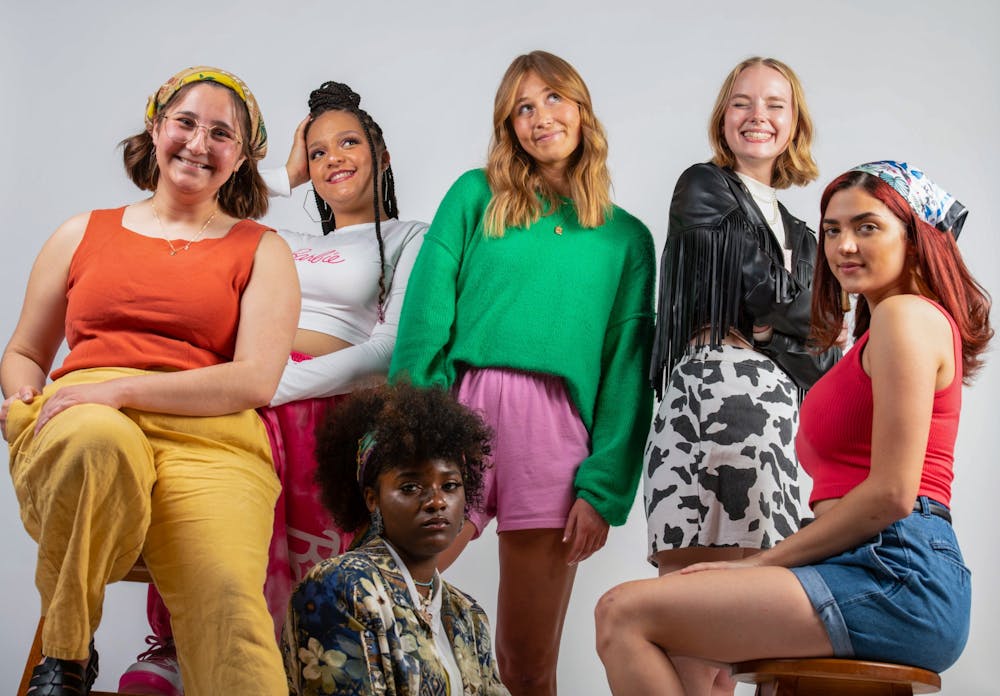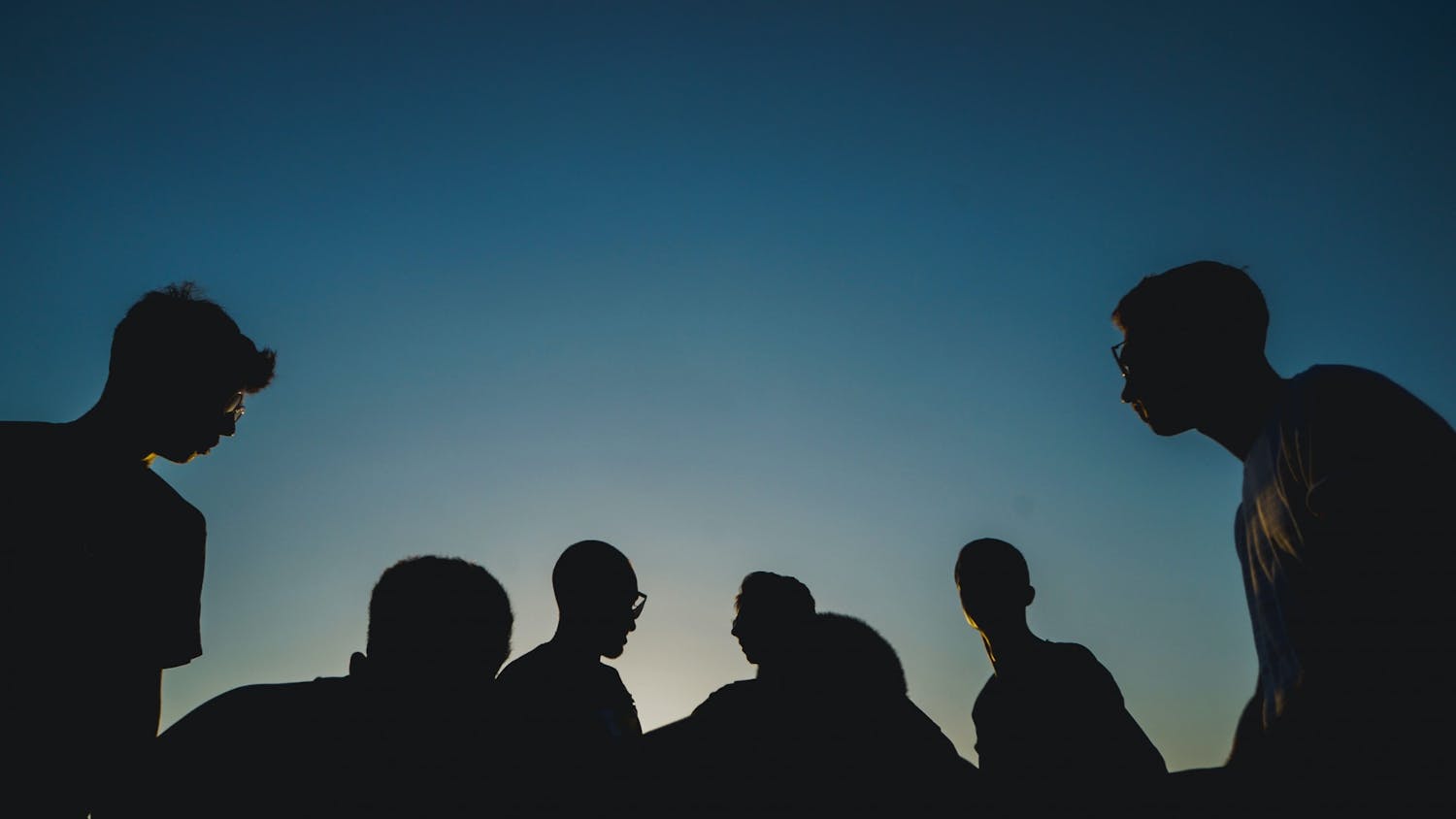“Florals for spring? Groundbreaking.”
Meryl Streep utters this famous quote as Miranda Priestly in “The Devil Wears Prada” alluding to the cliches spring fashion can often become.
However, spring 2022 fashion trends seem to be full of surprises diverging from the patterns of the last few years according to many fashion experts. This can be seen both on campus and on the runways.
The latest fashion weeks in New York, London, Paris and Milan signified a new look at fashion after the age of the pandemic.
The last two years have been full of fashion that commented on the pandemic itself — famously the Valentino Haute Couture Spring 2021 collection. Audiences may remember a look from this collection that Zendaya wore to the 2021 Critics Choice Awards.
However, this year many of the collections went back to having their own unique, non-pandemic-related, themes. Some traditional houses, like Ralph Lauren, even went so far as to not show at all during the last two years, but came back to show a new collection in the last weeks.
Fashion critic Luke Meagher also noted in a video critique of New York Fashion Week that newcomers such as Elena Valez and Peter Do added a much-needed vitality to the scene.
“I do always think it is interesting to see what small brands are doing,” senior JD Fritzeen said of his experience attending New York Fashion Week. “They’re usually right out of school, or they have a really unique perspective that maybe isn’t seen as much because it’s harder for a big brand to get that because they can’t pivot that easily.”
Overall, the season is shaping up to be more innovative than fashion has been in years and that has an effect on the trends of the season.
While every show in the most recent season was unique, a few consistent themes were prominently featured across the board. Tailoring, bold colors and patterns were common, as well as silhouettes from the 1960s and 70s.
These trends have led freshman Justice Bower to describe his current style in a unique way.
“I dress like a dad from Florida,” he said.
There’s a very specific and observable way that these trends will make their way into the market.
“When we talk about runway fashion, or high fashion or haute couture — those are all such elevated artforms of style and of fashion,” Fritzeen said. “A lot of runway pieces are created to be this insanely aspirational piece for the runway. A lot of them are never meant to be worn out on the street or are meant to be worn on carpets by celebrities. You see something on a runway and it’s going to slowly trickle down into major masses.”
Fritzeen referenced the famous scene from “The Devil Wears Prada” about cerulean gowns that eventually led to the movie’s protagonist wearing a cerulean sweater.
“It’s a very accurate part of that movie,” Fritzeen said. “Runways are so indicative of what we’re going to be seeing in store for mass consumers.”
A 2015 Washington Post article from Sarah Halzack describes this process. Halzack explains that brands look to the runways to set the standards and adapt the clothes to suit the needs of their clients.
Halzack also explains that while smaller brands have to take into consideration things such as cost and longevity of reproducing certain looks, larger brands such as H&M and Zara can reproduce trends within weeks of runway shows.
Other trend influences may come from Fashion Week more indirectly.
“Being in person for fashion week you see how important street style is,” Fritzeen said. “There are photographers every and anywhere — outside the shows, inside the shows, at the corners. It’s like the viewers’ runway before the runway.”
Other trends are influenced by celebrities.
“I always look up to famous singers and how they dress up on stages,” said sophomore Lal Sang. “So my suit was inspired by Harry Styles because his outfits are very colorful and represent how he feels.”
A quick scan of fast fashion aggregates like ASOS and Zara’s spring collections already include many of trends seen on the runway. Most of the designs feature swirly patterns reminiscent of the House of Sunny designs that were popular summer of 2021. Another prevalent pattern seems to be inspired by vintage Hermes scarves.
The patterns themselves were featured in colors like tangerine, deep aqua and kelly green. Items like T-shirt dresses and blazers were also made in fabrics like tweed or given ruffled sleeves as a twist on a classic.
Some of these same trends can be seen in the outfits modeled by students and faculty. Proliferating the outfits are bold colors and patterns like junior Sarah Wordhouse’s cow print skirt.
“I try not to follow microtrends because they won’t be around within a few months so I try to pick out items of clothing that I know will be trendy for a few years,” Wordhouse said. “You know, early 2000s is really in right now, so if you pick out an early 2000s skirt, make sure it’s a pattern that lasts for more than just a couple weeks.”
Sophomore M. Rain Taylor described the way she combines some of the current trends.
“I really like (fashion trends that are) androgenous. You can wear it on anyone, anyone can be inspired by it, anything that makes me feel comfortable and the skater vibe,” Taylor said.
Taylor faculty also showed off some of the season’s precedents. Assistant Professor of American Politics Jakob Miller sported a distinctly professorial look in a tweed blazer that showed off the tailoring and fabric of the season.
The looks demonstrate a wide range of styles, highlighting the individuals expressing their personal taste while also capturing the ebbs and flows of fashion.
While some trend predictors could tell you exactly how to dress, others disagree.
“I just don’t think there are any rules,” said Loralee Songer, assistant professor of music. “If you feel good in it then you should get it, and you should probably get it in multiple colors.”
To see the complete spring styles of the students and faculty mentioned in this piece, see here.





